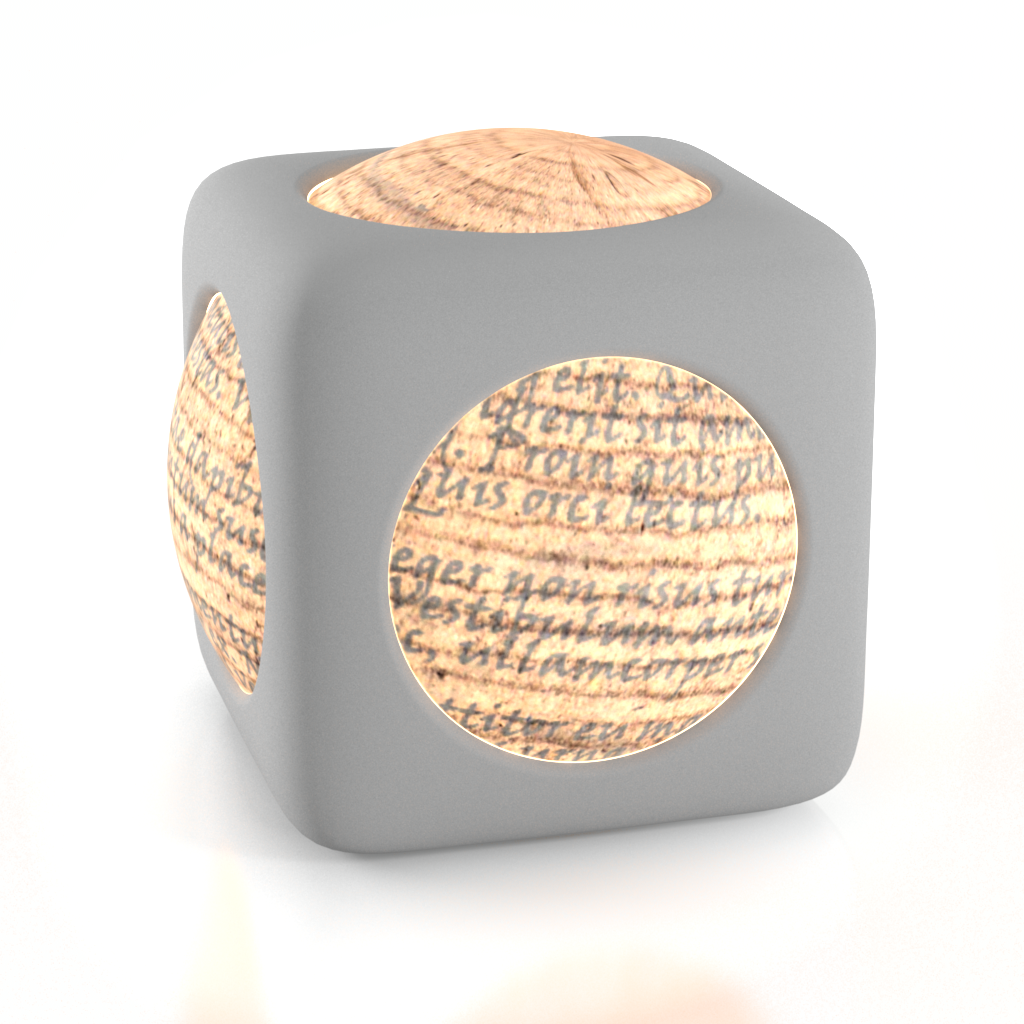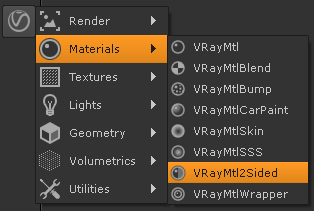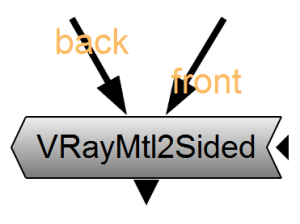This page provides information on the VRayMtl2Sided node.
Overview
The VRayMtl2Sided material is a utility material provided with the V-Ray renderer. It simulates a translucency effect where light and textures on the back side of the object show through the object. Use this material to simulate thin translucent surfaces like paper, cloth curtains, tree leaves, etc.
UI Path: ||Toolbar|| > V-Ray menu icon > Materials > VRayMtl2Sided
Inputs
The following parameters can be mapped with V-Ray Materials.
Front – The material which is going to be used for front-side faces as defined by the object normals.
Back – The material V-Ray will use for back side faces as defined by their normals.
Translucency – Determines which side (front or back) relative to the camera is more visible in the rendering process.
Parameters
Translucency – Determines which side (front or back) relative to the camera is more visible in the rendering process. When this parameter is closer to 0.0, more of the material facing the camera is going to be seen. When it is closer to 1.0, more of the back material is seen. When the value is 0.5, both the side facing the camera and the one facing away from it will be visible to the same degree. Translucency can be mapped by a texture using the input on the right side of the node.
Multiplier – A multiplier for the Translucency parameter.
Multiply by front diffuse – When enabled, the translucency is multiplied by the diffuse of the front material.
Force 1-sided sub-materials – When this option is enabled (the default), the sub-materials will render as one-sided materials. Disabling this option is not recommended.
Notes
- This material will give best results when assigned to single-sided objects (non-shelled) objects like planes, extruded splines etc. Otherwise it can lead to extremely long render times.



